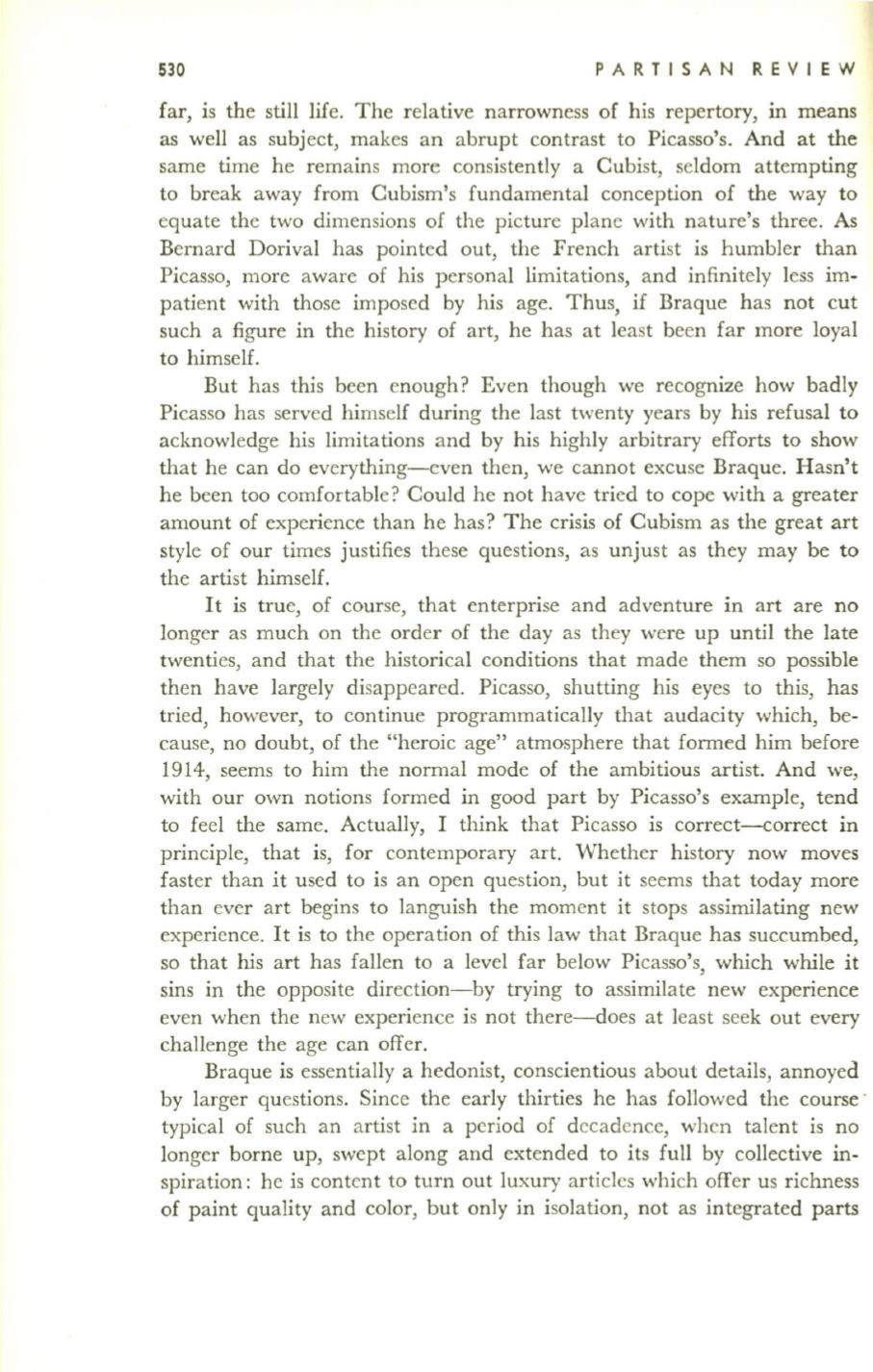
530
PARTISAN REVIEW
far, is the still life. The relative narrowness of his repertory,
in
means
as well as subject, makes an abrupt contrast to Picasso's. And at the
same time he remains more consistently a Cubist, seldom attempting
to break away from Cubism's fundamental conception of the way to
equate the two dimensions of the picture plane with nature's three. As
Bernard Dorival has pointed out, the French artist is humbler than
Picasso, more aware of his personal limitations, and infinitely less im–
patient with those imposed by his age. Thus, if Braque has not cut
such a figure in the history of art, he has at least been far more loyal
to himself.
But has this been enough? Even though we recognize how badly
Picasso has served himself during the last twenty years by his refusal to
acknowledge his limitations and by his highly arbitrary efforts to show
that he can do everything-even then, we cannot excuse Braque. Hasn't
he been too comfortable? Could he not have tried to cope with a greater
amount of experience than he has? The crisis of Cubism as the great art
style of our times justifies these questions, as unjust as they may be to
the artist himself.
It
is true, of course, that enterprise and adventure in art are no
longer as much on the order of the day as they were up until the late
twenties, and that the historical conditions that made them so possible
then have largely disappeared. Picasso, shutting his eyes to this, has
tried, however, to continue programmatically that audacity which, be–
cause, no doubt, of the "heroic age" atmosphere that formed him before
1914, seems to him the normal mode of the ambitious artist. And we,
with our own notions formed in good part by Picasso's example, tend
to feel the same. Actually, I think that Picasso is correct-correct in
principle, that is, for contemporary art. Whether history now moves
faster than it used to is an open question, but it seems that today more
than ever art begins to languish the moment it stops assimilating new
experience. It is to the operation of this law that Braque has succumbed,
so that his art has fallen to a level far below Picasso's, which while it
sins in the opposite direction-by trying to assimilate new experience
even when the ncw experience is not there-does at least seek out every
challenge the age can offer.
Braque is essentially a hedonist, conscientious about details, annoyed
by larger questions. Since the early thirties he has followed the course '
typical of such an artist in a period of decadence, whcn talent is no
longer borne up, swept along and extended to its full by collective in–
spiration: he is content to turn out luxury articles which offer us richness
of paint quality and color, but only in isolation, not as integrated parts


